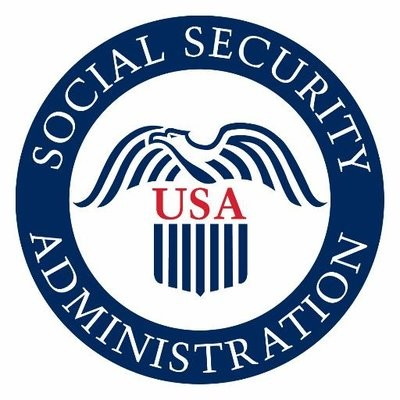Social Security Administration's Identity Verification Policy: A Balancing Act Between Security and Accessibility
March 28, 2025, 10:52 am

Location: United States, District of Columbia, Washington
Employees: 1001-5000
Founded date: 1958
Total raised: $85K

Location: United States, Maryland, Woodlawn
Employees: 10001+
Founded date: 1935
The Social Security Administration (SSA) recently found itself in a storm of criticism. The agency proposed new identity verification policies that would require many beneficiaries to visit local offices in person. This move, aimed at tightening security against fraud, quickly sparked backlash from advocacy groups, lawmakers, and the public. The uproar was loud enough to prompt the SSA to revise its plans, but the question remains: are these changes enough to protect the most vulnerable while ensuring accessibility?
The SSA's initial proposal was straightforward but problematic. It mandated that anyone unable to verify their identity online would have to make a trip to a Social Security office. For many, this was akin to asking them to climb a mountain. The elderly, disabled, and those living in remote areas faced daunting challenges. The logistics of travel, especially for those with mobility issues, became a focal point of concern.
In response to the outcry, the SSA announced a delay in the implementation of these policies. The new effective date was pushed from March 31 to April 14. This two-week reprieve was a small concession, but it did little to quell the concerns of those who felt blindsided by the rapid changes. Advocacy groups like AARP were particularly vocal, arguing that the SSA had failed to engage in a transparent dialogue before rolling out such significant changes.
The SSA's acting commissioner, Lee Dudek, acknowledged the backlash. He stated that the agency had listened to its customers and stakeholders. In a bid to soften the blow, the SSA exempted applications for Medicare, Disability, and Supplemental Security Income (SSI) from the in-person verification requirement. This was a step in the right direction, but many felt it was merely a band-aid on a larger wound.
The agency's approach to identity verification is a double-edged sword. On one hand, stronger security measures are essential to combat fraud. The SSA oversees benefits for approximately 180 million Americans, making it a prime target for scammers. The agency's intent to bolster security is commendable. However, the execution raised eyebrows. Critics argued that the SSA's policies seemed to adopt a "Silicon Valley" mentality—move fast and break things—without considering the unique needs of its clientele.
The implications of these changes are profound. For many seniors, Social Security benefits are a lifeline. They rely on these funds for daily living expenses. The prospect of navigating a complicated verification process, especially one that requires in-person visits, is daunting. AARP's advocacy highlighted that for some, it could mean traveling hundreds of miles just to fill out paperwork. This is not just an inconvenience; it is a barrier that could lead to financial hardship.
Moreover, the SSA's customer service has been under scrutiny. Reports indicate that wait times for phone assistance have skyrocketed. From an average of 11 minutes in November to over 21 minutes, the situation has worsened. Many callers are left hanging, with nearly half of calls going unanswered. This paints a picture of an agency struggling to keep pace with its responsibilities.
As the SSA grapples with these challenges, the need for a clear communication strategy becomes evident. Transparency is key. The agency must not only inform the public about changes but also engage them in the process. AARP's call for a more deliberate approach to policy changes is a reminder that the voices of beneficiaries matter. They should be part of the conversation, not just the recipients of decisions made behind closed doors.
The SSA's recent adjustments are a mixed bag. While the exemption for certain applications is a positive development, it does not fully address the underlying issues. The agency must ensure that all beneficiaries can access services without undue burden. This means considering the realities of travel, mobility, and the digital divide that affects many older Americans.
In the end, the SSA stands at a crossroads. It must balance the need for security with the imperative of accessibility. The road ahead will require careful navigation. The agency must remain vigilant against fraud while also ensuring that its most vulnerable populations are not left in the lurch. The stakes are high, and the consequences of missteps could be dire.
As the April 14 deadline approaches, all eyes will be on the SSA. Will it rise to the occasion and implement a policy that protects both security and accessibility? Or will it falter, leaving millions to navigate a labyrinthine system? The answer will shape the future of Social Security for years to come. The agency has a chance to redefine its relationship with the public. It must seize this opportunity to build trust and ensure that its services are truly accessible to all.
The SSA's initial proposal was straightforward but problematic. It mandated that anyone unable to verify their identity online would have to make a trip to a Social Security office. For many, this was akin to asking them to climb a mountain. The elderly, disabled, and those living in remote areas faced daunting challenges. The logistics of travel, especially for those with mobility issues, became a focal point of concern.
In response to the outcry, the SSA announced a delay in the implementation of these policies. The new effective date was pushed from March 31 to April 14. This two-week reprieve was a small concession, but it did little to quell the concerns of those who felt blindsided by the rapid changes. Advocacy groups like AARP were particularly vocal, arguing that the SSA had failed to engage in a transparent dialogue before rolling out such significant changes.
The SSA's acting commissioner, Lee Dudek, acknowledged the backlash. He stated that the agency had listened to its customers and stakeholders. In a bid to soften the blow, the SSA exempted applications for Medicare, Disability, and Supplemental Security Income (SSI) from the in-person verification requirement. This was a step in the right direction, but many felt it was merely a band-aid on a larger wound.
The agency's approach to identity verification is a double-edged sword. On one hand, stronger security measures are essential to combat fraud. The SSA oversees benefits for approximately 180 million Americans, making it a prime target for scammers. The agency's intent to bolster security is commendable. However, the execution raised eyebrows. Critics argued that the SSA's policies seemed to adopt a "Silicon Valley" mentality—move fast and break things—without considering the unique needs of its clientele.
The implications of these changes are profound. For many seniors, Social Security benefits are a lifeline. They rely on these funds for daily living expenses. The prospect of navigating a complicated verification process, especially one that requires in-person visits, is daunting. AARP's advocacy highlighted that for some, it could mean traveling hundreds of miles just to fill out paperwork. This is not just an inconvenience; it is a barrier that could lead to financial hardship.
Moreover, the SSA's customer service has been under scrutiny. Reports indicate that wait times for phone assistance have skyrocketed. From an average of 11 minutes in November to over 21 minutes, the situation has worsened. Many callers are left hanging, with nearly half of calls going unanswered. This paints a picture of an agency struggling to keep pace with its responsibilities.
As the SSA grapples with these challenges, the need for a clear communication strategy becomes evident. Transparency is key. The agency must not only inform the public about changes but also engage them in the process. AARP's call for a more deliberate approach to policy changes is a reminder that the voices of beneficiaries matter. They should be part of the conversation, not just the recipients of decisions made behind closed doors.
The SSA's recent adjustments are a mixed bag. While the exemption for certain applications is a positive development, it does not fully address the underlying issues. The agency must ensure that all beneficiaries can access services without undue burden. This means considering the realities of travel, mobility, and the digital divide that affects many older Americans.
In the end, the SSA stands at a crossroads. It must balance the need for security with the imperative of accessibility. The road ahead will require careful navigation. The agency must remain vigilant against fraud while also ensuring that its most vulnerable populations are not left in the lurch. The stakes are high, and the consequences of missteps could be dire.
As the April 14 deadline approaches, all eyes will be on the SSA. Will it rise to the occasion and implement a policy that protects both security and accessibility? Or will it falter, leaving millions to navigate a labyrinthine system? The answer will shape the future of Social Security for years to come. The agency has a chance to redefine its relationship with the public. It must seize this opportunity to build trust and ensure that its services are truly accessible to all.